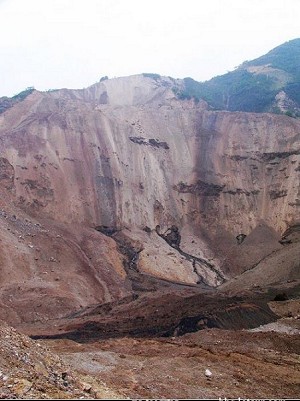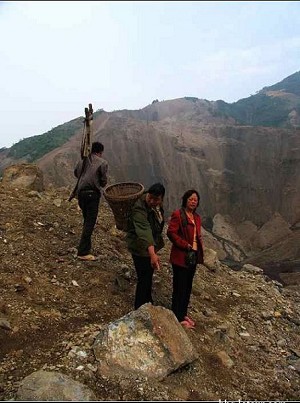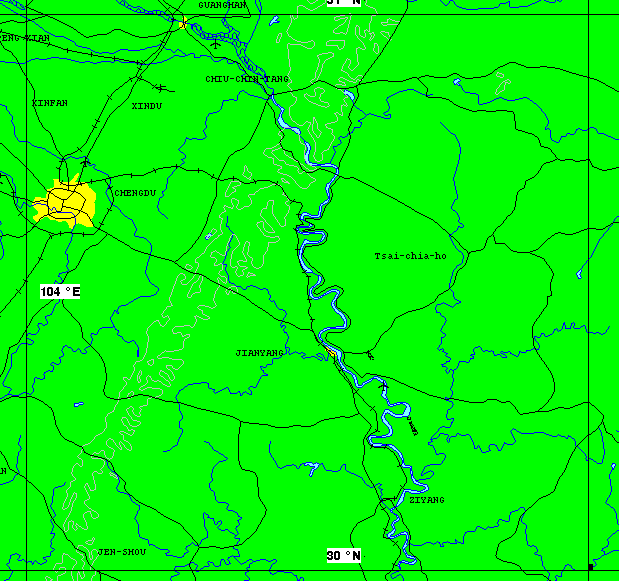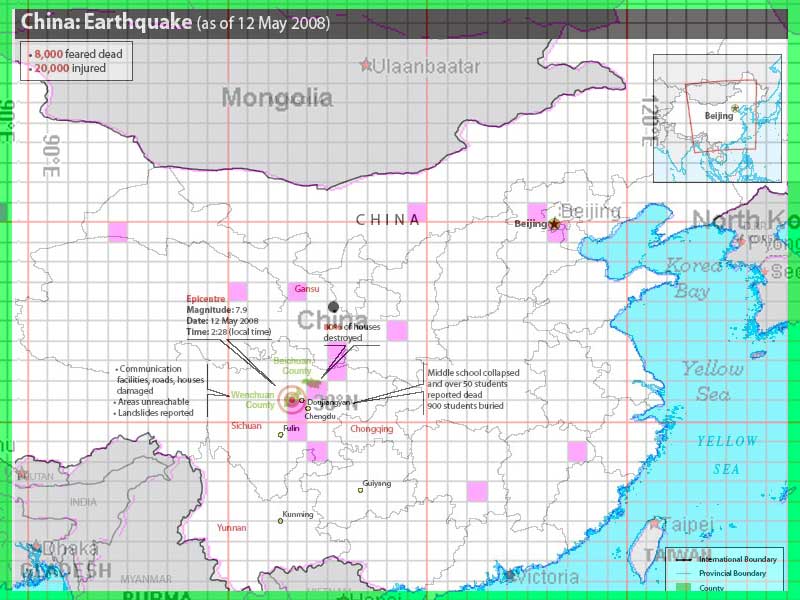|
|
|||||||||||||||||||||||||||||||||||||||||||||||||||||||||||||||||||||||||||||||||||||||||||||||||||||||||||||||||||||||||||||||||||||||||||||||||||||||||||||||||||||||||||||||||||||||||||||||||||||||
Authorities Release New Info
Saying 32 Radiation Sources Were Damaged In Disaster
(AP) More than 30 sources of radiation were buried by debris from the massive earthquake in central China last week, but all have either been recovered or safely cordoned off, state media reported Tuesday. The Chinese government had previously said all nuclear facilities affected by the May 12 earthquake were safe and under control, but did not give any details about which sites were affected or whether any were damaged. But the quake buried 32 sources of radiation under rubble in Sichuan province, the heart of the disaster zone, Xinhua News Agency reported, citing Minister of Environmental Protection Zhou Shengxian. All but two sources have been recovered, and the remaining two have been located, cordoned off and will soon be transported to a safer location, Xinhua said. Xinhua did not elaborate on any potential threat to the public and did not provide details on the radioactive sources beyond calling them "nuclear facilities and radioactive sources for civilian purposes." Thierry Charles, an official at a French nuclear watchdog who has seen reports from the Chinese nuclear safety agency, said materials found in the rubble appeared to come from hospitals, factories or laboratories and were not used for making nuclear fuel or weapons. Though Sichuan has no commercial nuclear power plants, the province has extensive military and nuclear weapons research facilities. The headquarters for China's nuclear weapons design facility is in Mianyang and a plutonium processing facility is in Guangyuan, both cities damaged by the quake. Hans Kristensen, a nuclear arms expert at the Federation of American Scientists, was skeptical about the Chinese government's blanket statement that all nuclear facilities were safe, questioning why no information was released on specific nuclear weapons plants. "I find it hard to believe, given the widespread destruction in this region, that the military plants that have nuclear materials somehow escaped (the disaster's) reach," he said. In response to the quake, the military sent soldiers to protect nuclear sites and the country's nuclear safety agency notified staff to be prepared in case of an environmental emergency. China's main government Web site and a state-run newspaper described "nuclear facilities" and "radioactive sources" as including power plants, reactors, and sites for fuel production and waste disposal, as well as materials used for scientific research and medical treatment. "It doesn't shock me that there would be radioactive items found," particularly hospital equipment, said Charles, director of plant safety at the French Institute for Radiological Protection and Nuclear Safety. An unknown number of hospitals were damaged or destroyed in the earthquake. The Sichuan province health department listed 489 major hospitals in areas that were hardest hit. Kristensen said if the buried radioactive materials can be isolated and sealed quickly, there should be no risk to the public. Workers removing radioactive material would first find it with detection devices, then extract the material and place it in a sealed container quickly, Charles said. Then it would be repaired or disposed of as nuclear waste. Information so far suggests "a good reaction by the Chinese teams," Charles said. However, he said risks remain, primarily from any materials that have not been retrieved or sealed. People who remain in close proximity could receive excessive doses of radiation. He said there was also a risk people could be exposed to radioactivity if some materials were crushed, for example in a building collapse. Overall, he did not foresee a major risk to groundwater or health because most of the material was probably metal equipment, not fuel or something that disperses more widely. The French watchdog agency has previously said that
China reported "light damage" to unspecified nuclear facilities that were
being dismantled before the quake.
© MMVIII The Associated Press. All Rights Reserved. SOURCE: CBS NEWS |
|||||||||||||||||||||||||||||||||||||||||||||||||||||||||||||||||||||||||||||||||||||||||||||||||||||||||||||||||||||||||||||||||||||||||||||||||||||||||||||||||||||||||||||||||||||||||||||||||||||||
|
..
Earthquake Destroyed China's
Largest Military Armory, Says Source
A high-level Chinese military source secretly disclosed last week that the recent earthquake in Sichuan Province caused a chain-reaction of explosions in the Sichuan mountain areas. The explosions destroyed Chinese army's largest armory, new weapon test bases and part of nuclear facilities including several nuclear warheads. This information is considered China's top military secret. After the earthquake, Chinese authorities had ignored the disaster victim's initial calls for help. Only after the first critical 72 hours had passed did the authorities allow international aid to be delivered to the disaster region. Military analysts believe that this delay occurred because Mianyang City of Sichuan Province is one of important areas for the Chinese military nuclear industries and also its largest armory. The Chinese regime did not want potential spies from the outside world in this very sensitive military area during a time when there may have been a nuclear accident.
"I went to see the site of the
explosion again. Villagers on the road told me, 'These concrete blocks
and soil were from the explosion,'" said a medical team member. (Photo
provided by mainland Chinese Internet Users)
According to sources, a nuclear accident did happen. On June 27, the Chinese military disclosed that 2,700 chemical cleanup workers had been sent to earthquake disaster areas for nuclear chemical emergency rescue. After carefully analyzing seismic data, military experts in southeast Asia confirmed a non-geological shock had occurred at the earthquake epicenter. The energy released was equivalent to that of an underground nuclear explosion.
A villager said, "At that time,
I heard a huge explosion and saw red substances tens of meters high rising
off the mountain. This scared me to death." (Picture provided by mainland
Chinese Internet Users)
China News Service (CNS) reported earlier that some Chinese experts had made a seismic analysis and suggested that a nuclear explosion might have occurred at the epicenter. At that time, it was said by official military sources that the readings were due to a huge explosion of a large-scale military armory in Sichuan. According to a CNS report on May 31, titled "Suspicious Epicenter of the Epicenter Was Found," on May 23, a medical team, consisting of paramedics from the People's Liberation Army (PLA) hospitals and psychologists from Beijing, found onsite a one- kilometer (0.62 mile) wide and two kilometers (1.24 mile) long valley on a hill close to the epicenter. The long ravine was found to have been covered with concrete debris 10-20 inches thick at its bottom as if large cement blocks were tossed about randomly surrounding the immediate area. A team member said, "Where did those concrete blocks come from?" Since there were no large buildings nearby, everybody was curiously talking about it but could not find an answer. A local resident surnamed He talked about what had happened. He said many villagers were working in their fields at the time of the earthquake on May 12. The earth suddenly shook and shortly afterwards, a thunderous sound came out of the mountain. Immediately after the explosion, they then saw a huge hole form at the top of the mountain. Many things were pushed out of this hole like toothpaste being squeezed out. "Was it magma?" somebody asked. "No, those were concrete blocks," said He. "The eruption lasted about three minutes," he added.
Earthquakes may sometimes result in a volcanic eruption, but no concrete eruption has ever been recorded, said an expert. Based on the CNS report, several experts have suggested the eruption could have been caused by a huge explosion beneath the mountain, which shattered the concrete cover of the underground facilities and pushed them to the surface. The thickness of the concrete blocks pushed to the surface seemed to match the cover layer used in China's underground military bases. SOURCE: Epoch Times |
|||||||||||||||||||||||||||||||||||||||||||||||||||||||||||||||||||||||||||||||||||||||||||||||||||||||||||||||||||||||||||||||||||||||||||||||||||||||||||||||||||||||||||||||||||||||||||||||||||||||
| Chengdu
Nuclear Fuel Fabrication (NFF)
30°40'N 104°04'E P.O. Box 257
The Nuclear Fuel Fabrication facility is engaged in the production of fuel for the 300 MWe PWR at Quinshan (near Shanghai) and the two 900 MWe PWRs at Daya Bay (near Hong Kong). The Daya Bay Nuclear Power Plant, built under contracts with the French FRAMATOME and the British GEC, has two pressurized water reactors with an electrical output of 1,000 MW each. One was put into commercial operation in February 1994, and the other in May 1994. Russian-assisted nuclear projects in China are conducted under an intergovernmental agreement signed on 18 December 1992 for a gas centrifuge plant for uranium enrichment to be built in China for nuclear power stations. The first phase of construction by Russia of a gas centrifuge enrichment plant at Chengdu in Sichuan Province was completed in 1996. The plant, with a capacity of 200,000 SWU/year, is producing uranium enriched to 4% U-235 for the indigenously-designed 300 MWe PWR, Qinshan 1. Civil engineering work has begun on phase two of the project, a second 200,000 SWU/year centrifuge plant which is scheduled to begin operating by the end of 1998. A third plant is planned to be in operation by 2000-2001. The project is subject to IAEA safeguards. Some sources assert that this facility is under construction in Hanzhung, Shaanxi Province.
SOURCE: FAS.org Sources and Resources:
|
|||||||||||||||||||||||||||||||||||||||||||||||||||||||||||||||||||||||||||||||||||||||||||||||||||||||||||||||||||||||||||||||||||||||||||||||||||||||||||||||||||||||||||||||||||||||||||||||||||||||
Nuclear Facilities in China
Sources and Resources
John Wilson Lewis and Xue Litai (Contributor), China Builds the Bomb (Stanford Univ Press, May 1991) |
|||||||||||||||||||||||||||||||||||||||||||||||||||||||||||||||||||||||||||||||||||||||||||||||||||||||||||||||||||||||||||||||||||||||||||||||||||||||||||||||||||||||||||||||||||||||||||||||||||||||
Posted by kdial1 Member of ATS This
Thread
|
|||||||||||||||||||||||||||||||||||||||||||||||||||||||||||||||||||||||||||||||||||||||||||||||||||||||||||||||||||||||||||||||||||||||||||||||||||||||||||||||||||||||||||||||||||||||||||||||||||||||
| Response by LazyGuy, Member at ATS
Post ID 370472 made joint overlay
..
|
|||||||||||||||||||||||||||||||||||||||||||||||||||||||||||||||||||||||||||||||||||||||||||||||||||||||||||||||||||||||||||||||||||||||||||||||||||||||||||||||||||||||||||||||||||||||||||||||||||||||
| FAIR USE NOTICE: This page contains copyrighted material the use of which has not been specifically authorized by the copyright owner. Pegasus Research Consortium distributes this material without profit to those who have expressed a prior interest in receiving the included information for research and educational purposes. We believe this constitutes a fair use of any such copyrighted material as provided for in 17 U.S.C § 107. If you wish to use copyrighted material from this site for purposes of your own that go beyond fair use, you must obtain permission from the copyright owner. | |||||||||||||||||||||||||||||||||||||||||||||||||||||||||||||||||||||||||||||||||||||||||||||||||||||||||||||||||||||||||||||||||||||||||||||||||||||||||||||||||||||||||||||||||||||||||||||||||||||||
|
|









